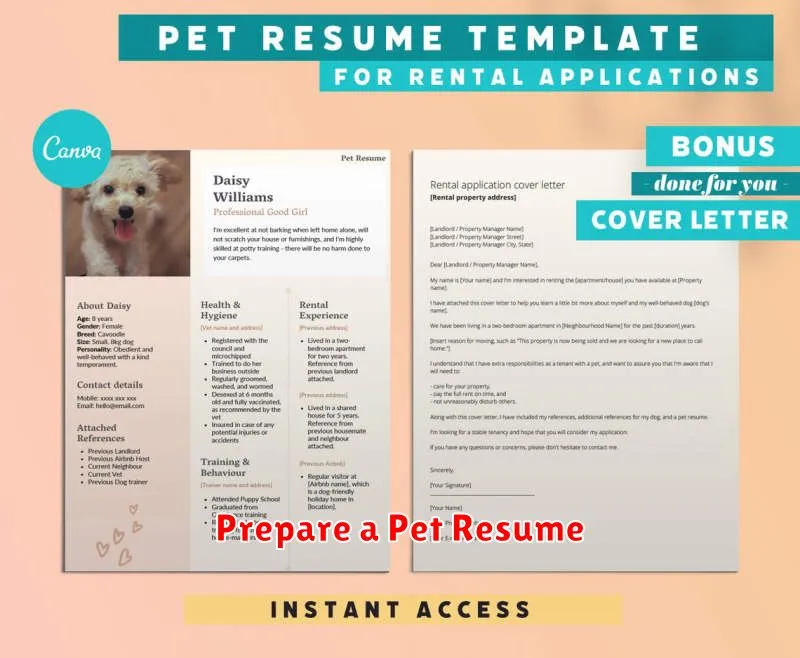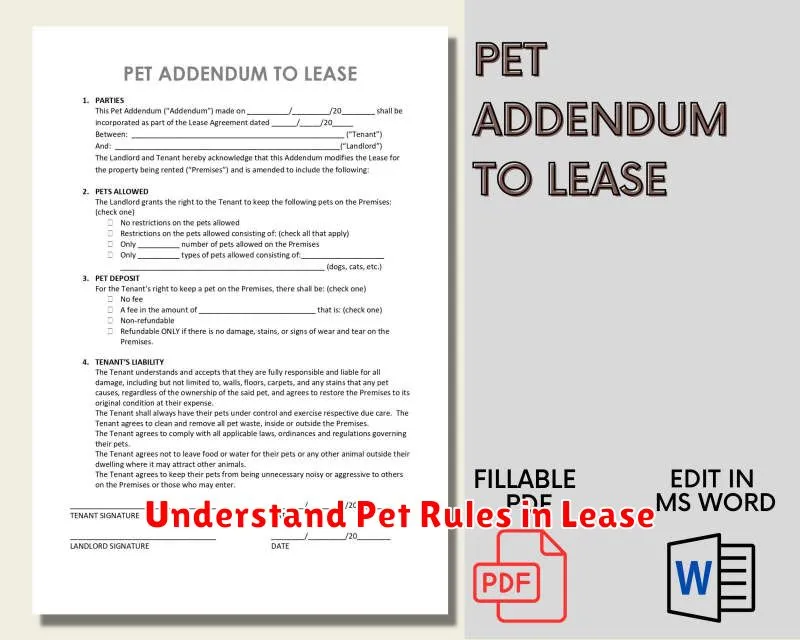Finding the perfect rental property can be challenging, especially when you have pets. Many landlords have restrictions regarding animals, making the search even more difficult. This article offers invaluable tips for renting with pets, covering everything from understanding pet policies and preparing a pet resume to negotiating with landlords and ensuring a smooth transition into your new home. Whether you have a dog, cat, or other furry, feathered, or scaled companion, these tips will help you navigate the rental market successfully and secure a pet-friendly property.
Renting with pets requires careful planning and preparation. From researching pet-friendly properties and crafting a compelling pet resume to understanding pet deposits and pet rent, there are many factors to consider. This guide provides essential tips for renting a property with pets, empowering you to find the ideal living situation for both you and your beloved animal companions. Learn how to present yourself as a responsible pet owner and increase your chances of securing a lease in a pet-friendly rental.
Search for Pet-Friendly Listings
Begin your search by specifically looking for pet-friendly properties. Utilize online search filters on real estate websites to narrow your results. Common keywords include “pets allowed,” “dog-friendly,” or “cat-friendly.” Be sure to read listing descriptions carefully, as some landlords may have restrictions on breed, size, or the number of pets allowed.
Contacting property management companies or landlords directly can also be effective. Inquire about their pet policies upfront to avoid wasted time viewing unsuitable properties. Be prepared to provide information about your pet, such as breed, age, and any training certifications. Demonstrating your responsibility as a pet owner can increase your chances of securing a rental.
Prepare a Pet Resume

A pet resume can significantly improve your chances of securing a rental property. It provides landlords with a comprehensive overview of your pet, highlighting their best qualities and responsible ownership.
Essential Information to Include:
- Pet’s Name, Breed, Age, and Photo: A clear picture helps personalize your pet.
- Veterinary Records: Proof of vaccinations, spay/neuter status, and recent check-ups demonstrate responsible pet ownership.
- Training and Obedience Information: Highlight any obedience training, certifications, or good behavior habits. This reassures landlords about your pet’s temperament.
- References: Include contact information for previous landlords, pet sitters, or veterinarians who can vouch for your pet’s good behavior.
- Personality Description: Briefly describe your pet’s personality, highlighting positive traits like friendliness, calmness, or house-trained habits.
Offer an Extra Deposit if Needed
Some landlords may require a larger security deposit for tenants with pets to cover potential damages. Offering an additional pet deposit upfront demonstrates your responsibility and willingness to cover any pet-related expenses. This can significantly increase your chances of securing the rental property.
Be proactive and discuss this possibility with the landlord. A reasonable extra deposit can reassure them that you are a responsible pet owner. This also shows that you are prepared to take financial responsibility for any potential damage caused by your pet.
Clearly outline in the lease agreement what the extra deposit covers. This avoids any misunderstandings later. Specify whether it’s for pet-related damages only or can be used for general wear and tear.
Introduce Your Pet to the Landlord
A face-to-face meeting between your pet and your potential landlord can be beneficial. This allows the landlord to assess your pet’s temperament firsthand. A well-behaved pet can make a positive impression.
Prepare your pet beforehand. Ensure they are groomed and well-behaved during the introduction. Keep them on a leash or in a carrier, depending on their personality and the environment. This shows you are a responsible pet owner.
If a meeting isn’t possible, consider a video showcasing your pet’s personality and obedience. This can be a helpful alternative.
Understand Pet Rules in Lease

Before signing any lease agreement, carefully review the pet clauses. These clauses outline the specific rules and regulations regarding pets within the property.
Common pet rules often include restrictions on breed, size, and number of pets allowed. Some properties may require pet interviews or additional pet deposits. Be aware of any specific requirements for vaccinations, licensing, and leash laws.
Pay close attention to clauses addressing pet-related damages. Understand your responsibilities for repairing any damage caused by your pet. Some leases may also specify designated pet areas within the property.

